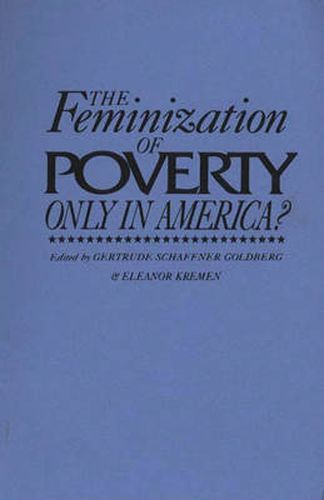Readings Newsletter
Become a Readings Member to make your shopping experience even easier.
Sign in or sign up for free!
You’re not far away from qualifying for FREE standard shipping within Australia
You’ve qualified for FREE standard shipping within Australia
The cart is loading…






This study asks whether the feminization of poverty, the tendency of women and their families to become the majority of the poor, is unique to the United States, where the phenomenon was first noticed. Seven industrialized nations, both capatalist and socialist, with different degrees of commitment to social welfare are compared: Canada, Japan, France, Sweden, Poland, the Soviet Union, and the United States. In each of the countries the authors analyze information about women, labour market conditions, equalization policies, social welfare programmes, and demographic variables such as the rates of divorce and single parenthood. According to Goldberg and Kremen, it is possible to predict the feminization of poverty when three conditions are present: 1)insufficient efforts to reduce work place and wage inequities for women: 2) the absence or ineffectiveness of social welfare programmes which can redress the cost, coth economic and personal, of the dual role that women have assumed in industrialized societies; and 3) the presence of increasing rates of divorce and single motherhood. An array of labour market and social welfare programmes in use in the six other industrialized nations are then reviewed by the authors for possible adaptation in the United States. This important work will be a valuable resource for scholars across the academic and professional disciplines of political science, sociology, economics, social work, and women’s studies.
$9.00 standard shipping within Australia
FREE standard shipping within Australia for orders over $100.00
Express & International shipping calculated at checkout
This study asks whether the feminization of poverty, the tendency of women and their families to become the majority of the poor, is unique to the United States, where the phenomenon was first noticed. Seven industrialized nations, both capatalist and socialist, with different degrees of commitment to social welfare are compared: Canada, Japan, France, Sweden, Poland, the Soviet Union, and the United States. In each of the countries the authors analyze information about women, labour market conditions, equalization policies, social welfare programmes, and demographic variables such as the rates of divorce and single parenthood. According to Goldberg and Kremen, it is possible to predict the feminization of poverty when three conditions are present: 1)insufficient efforts to reduce work place and wage inequities for women: 2) the absence or ineffectiveness of social welfare programmes which can redress the cost, coth economic and personal, of the dual role that women have assumed in industrialized societies; and 3) the presence of increasing rates of divorce and single motherhood. An array of labour market and social welfare programmes in use in the six other industrialized nations are then reviewed by the authors for possible adaptation in the United States. This important work will be a valuable resource for scholars across the academic and professional disciplines of political science, sociology, economics, social work, and women’s studies.